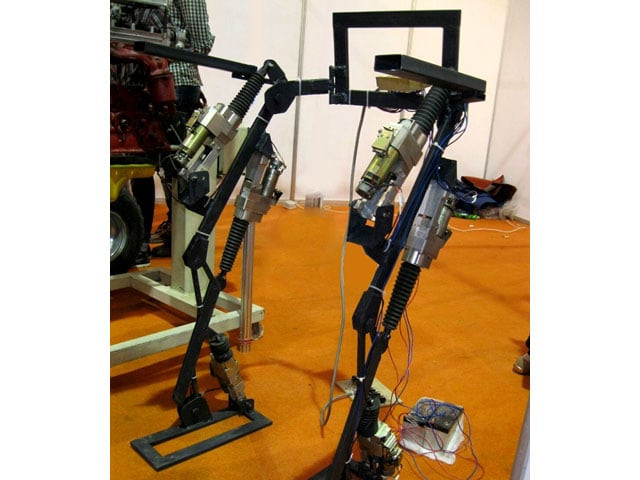In first, Karachi's UIT students develop robotic legs for the disabled
The exoskeleton can assist the paraplegics in the functions of sitting, standing and walking

PHOTO: MOUTASIM ABBASI/ADIL HANIF
"We have developed this exoskeleton model for paraplegics to assist them in the functions of sitting, standing and walking," explained Moutasim Abbasi, who led the project. The other two students included Adil Hanif and Muhammad Usman.
The group, working under the supervision of Associate Professor Engineer Raza Jafri, exhibited their four months of hard work and research at the Pakistan Auto Parts Show (PAPS) held recently at Expo Centre, Karachi.
SC seeks explanation from PBS for ‘neglecting’ persons with disabilities in census
The battery-powered model cost the students Rs150,000 and runs with a motor. A fully charged battery runs for 30 to 45 minutes.
"This wearable exoskeleton will help paraplegics get rid of wheelchairs and crutches," Adil added.

Explaining some features of the bionic device, he said that six motors attached to the system will function as an alternative for major joints such as hips, knees, and ankles for positioning the upper body, thighs, shank, and ankle.
The exoskeleton also has an ability to curl up a person weighing 85 kilogrammes and can exceed this limit if the motors, hydraulics and mechanical structure are customised further.
Differently-abled persons thrive at Abilities Expo in Karachi
"We are planning to commercialise this prototype at a very reasonable cost for the paraplegics that would be a fraction of the price of similar projects in Japan and Berkeley," Moutasim added.
Projects such as these, he hoped, could prove a breakthrough in such bio-technical aids which would be extremely beneficial in a developing country like Pakistan.



















COMMENTS
Comments are moderated and generally will be posted if they are on-topic and not abusive.
For more information, please see our Comments FAQ